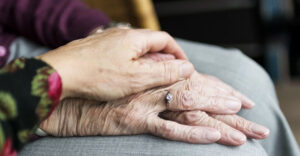
While students are home for winter break, their time is usually filled with holiday parties, hanging out with friends, and downtime to recharge before the Spring semester begins. When transitioning back to school, getting back into the swing of things with coursework and developing a routine can be challenging. These changes can be even more daunting for those who live in colder climates and have to contend with the winter blues. According to the National Institute of Mental Health, roughly 25 percent of college students across the country suffer from the winter blues. To make sure the effects of this wintertime phenomenon doesn’t permeate into your everyday life, it’s important to know what the winter blues are and signs to look out for, and how to combat its effects.
What exactly are the winter blues?
The term “winter blues” refers to feelings of unhappiness or a low mood that typically occur during the colder, darker months of winter. It is generally defined as a lack of energy, a desire to stay inside and keep warm, and can cause a feeling of tiredness in response to the cold weather and shorter days. Given it’s not a medical diagnosis, anyone can experience the winter blues, and this is especially true for college students. The stressors that come along with college work and life can impact this mood change. Winter blues, or cabin fever, don’t necessarily interfere with general functioning, but it may cause an individual to feel a sense of gloom in addition to lacking in energy. Signs like irritability, low energy, difficulty concentrating, and changes in appetite and sleep patterns can lead to extreme or persistent cases that may end up being labeled as Seasonal Affective Disorder (SAD), which requires a proper diagnosis.
What can we do to combat the winter blues?
No matter the time of year, it’s important to take care of yourself physically, emotionally, and socially, but this is especially true during the winter months. Experts suggest moving your body and getting exercise, such as running, swimming, or going for a short walk. According to Kristy Robinson, the acting director of personal counseling at Westchester Community College, “our bodies need movement, and a little bit can go a long way when you are feeling down.” Beth Faller, professor of counseling at Adirondack Community College, notes, “for many people, getting outside, especially on a sunny day, is paramount and can re-energize.”
It’s also important to reach out to family and friends to avoid isolation, which can make moods worsen. Whether it’s joining a new club on campus, getting in touch with your parents, or grabbing something to eat with friends, socializing with others helps you stay connected and not alone.
Rebecca Harrington, a health educator at SUNY Oneonta, shares that other forms of treatment, especially if diagnosed with SAD, includes the utilization of full-spectrum lights, a vitamin D supplement, and seeking out a mental health counselor, if needed. A counselor will help refer you to a local health provider, who may suggest trying out medication if the aforementioned modalities haven’t worked.
Lastly, Robinson shares that it’s key to prioritize and be understanding with yourself. This time of year can be increasingly stressful–“you don’t have to do it all. Make a list or schedule of what you need to get done, and be sure to include time for rest and activities you enjoy.”
Are there long-term implications if the winter blues are left untreated?
As noted above, the winter blues typically don’t interfere with general functioning and completing daily tasks, but if one’s winter blues go unmanaged or worsen, it is possible that an individual is dealing with SAD or a more serious form of clinical depression, says Robinson. To be diagnosed with SAD, there is a list of criteria that people must meet for major depression, which coincides with seasonal changes for at least two years. Major depressive criteria can include some of the same effects of the winter blues–feelings of sadness or hopelessness most of the time, having low energy, loss of interest in normal activities, and others–over a longer period of time.
Harrington shares that we should get in the practice of checking in with ourselves about the signals our body is giving about its stress level before we get to the point of burnout. She notes that if we don’t pursue treatment due to a lack of awareness of what’s going on in our bodies, it can be hard to be proactive once you are already feeling stressed. Any time a symptom — physical, mental, or emotional — is making it harder to thrive in our daily lives, it’s worth taking the steps to make an appointment with a professional and start the process of getting to the root cause of what’s affecting your mental health.
What services does SUNY provide to students?
This past October, SUNY launched a system-wide Student Mental Health and Wellness Task Force to study ways to provide resources of all kinds that help students deal with mental health issues. As noted by Chancellor Johnson, “Not only will we expand our resources and safety nets across SUNY, we will also strengthen our early interventions to better ensure we reach our students in need and get them to sources of help.” The task force will focus on early interventions and examine current practices and public health approaches throughout the country to address the mental health needs of SUNY students.
In addition to the task force, individual SUNY campuses offer a number of resources that students can take advantage of. At SUNY Adirondack, for instance, they offer supportive counseling, workshops, and group therapy. The division that their counseling office is under is also responsible for Freshman Experience courses, so they are able to interact with a number of students. Just this month, UAlbany announced that its new Health and Counseling Services Center has been completed, which will provide students on-campus access to health, wellness, and psychological services. SUNY Potsdam even has a small, private room with a light therapy box that mimics outdoor light, which students can take advantage of to combat SAD.
Living in the Northeast of the United States means that we’ll experience weather changes during the winter every year. But the good thing is that there are so many activities across our state to keep you busy and having fun during the colder months. The more information you have about the winter blues, the more you’ll know what signs to look out for and how to take care of yourself during these cold months. For SUNY students, our campuses provide them with a number of options to seek out when help is needed. Should you or anyone you know require mental health assistance, please contact your campus’s counseling center, or visit the following resource.



